
© Paul Kolnik. (Click image for larger version)
New York City Ballet
Concerto Barocco, Kammermusik No. 2, Who Cares?
New York, David H. Koch Theater
12 January 2014
www.nycballet.com
Baroque Style
There is perhaps no better way to start off a season at New York City Ballet than with a performance of Balanchine’s Concerto Barocco. (In fact, it was on the company’s first program, in 1948.) It sets a tone, reminding us of dance’s unique ability to create moving architecture through the poetry of the human body as it enters into conversation with music. Like the Bach double violin concerto to which it is set – and the simple, all-white costumes – the choreography is spare, limpid, immediately legible. We see and hear each of its moving parts, understand the transitions, and notice the way certain phrases, like a repeated hop on pointe followed by a small bow, or a courtly Baroque dance step, return from one movement to the next, leading to a logical, almost inevitable conclusion. We hear the repetitions, and see them play before us as dancers return to their original starting place, like a violinist beginning da capo. And yet, for all its concern with structure, the ballet reads as pure, sublimated meaning and emotion. Through the steps the dancers become extensions of the twining violin melodies, and yet still remain tantalizingly human, alive – like us, only better.
Barocco can also be a prism through which to glimpse the current state of the company. A good performance is like a clean bill of health, a sign of good things to come. The first night of City Ballet’s winter season promised much, despite a certain tentativeness in the opening bars, due in part to beginner’s nerves but also imposed by sluggish tempi in the pit under the baton of the guest conductor Scott Ellaway. This is one of the few companies that tends to look happier when moving at a brisker tempo. The orchestra, in general, sounded ragged, though the two violin soloists played with pleasing clarity.
On the other hand there was no tentativeness in Sara Mearns’ interpretation; her approach to each phrase was like an interjection in a heated conversation. Her traveling piqué steps, in which the dancer propels herself onto one pointe, had a push that made the space before her look like nothing. Her eyes shone, as if the entire universe were contained within the world of the ballet. Her counterpart in the role of first violin, Maria Kowroski, had a more pallid, even melancholy quality. Kowroski was not quite Mearns’ match; a certain contrast between the two lead women is important, but it should be a conversation between equals. In the pas de deux, complemented by the ardent and elegant Tyler Angle, Kowroski looked more at ease as she rose from lift to floating lift, drifting up and over the ensemble’s heads like a comet in slow motion or joining with them in complex garlands that slowly drift into one of Balanchine’s surprising sunbursts of legs. Like so many Balanchine ballets, Barocco is a celebration of the female form.
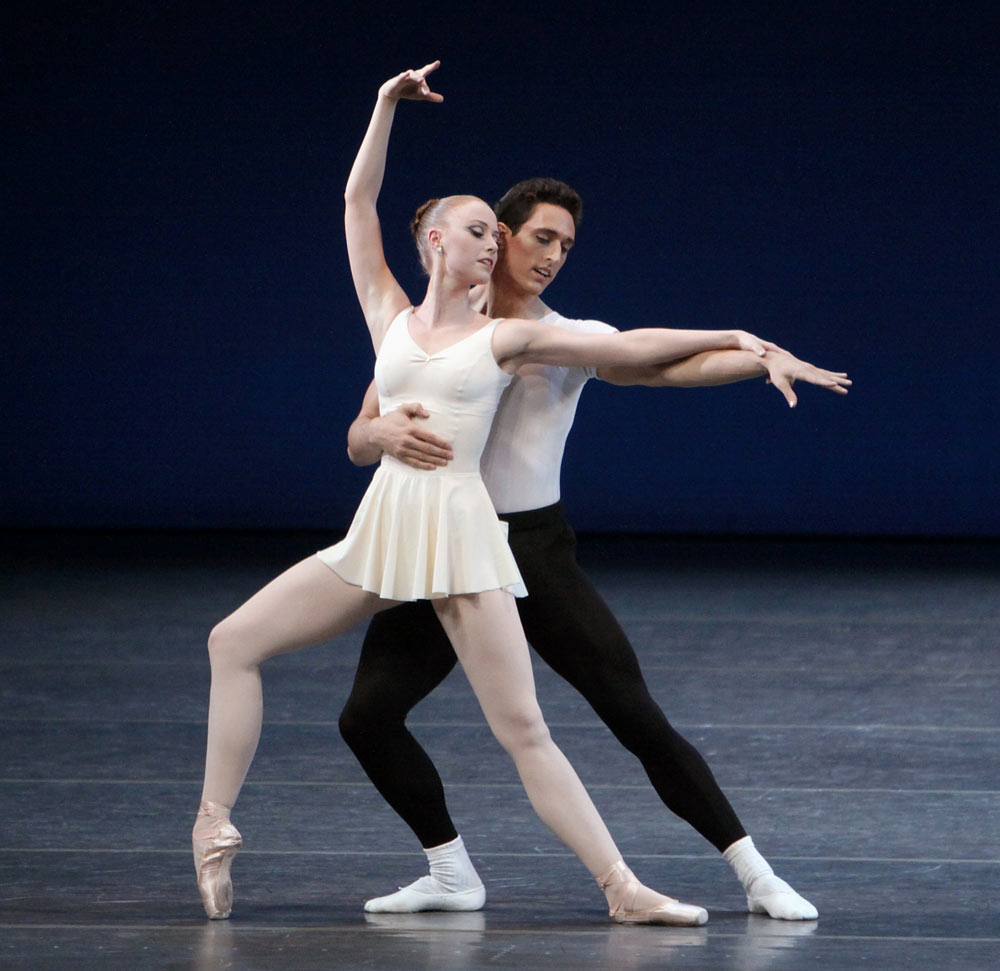
© Paul Kolnik. (Click image for larger version)
The other two works on the program served as a reminder of Balanchine’s range, from gleefully angular Art-Deco modernism (in Kammermusik No. 2) to rapturous Americana (in Who Cares). Kammermusik No. 2, set to Paul Hindemith, is a late work, from 1978. Balanchine seems to have been in a playful mood when he made it, taking on Hindemith’s percussive, repetitive loops for the piano with a wild vocabulary of kicks, lunges, skips. The two ballerinas’ hair, tied back into long ponytails, swooshes about, making them look like cheerleaders run amok. The usually placid Rebecca Krohn came out with a roar, followed closely by the more staccato Abe Stafford. Like Barocco, it’s a ballet about two women (later joined by two men, Jared Angle and Amar Ramasar) who dance in tandem, one often moving one beat ahead or behind the other.
The other particularity of this ballet is that the ensemble is made up of men, performing many of the twining, frieze-like moves usually given to women. Except that here they are exaggerated, almost to humorous effect. They crouch, arms held out like propeller blades or bent up like archaic figures on a vase, or stalk around on bent legs, like cowboys. Arms pull in at the elbow like chicken wings – as in Rubies – or twist into knots as the men arrange themselves into complex formations. Everything in Kammermusik feels exaggerated, even the partnering, with its hints of exoticism and almost Kabuki-like emotion – one of the women repeatedly places her face on her partner’s hand in a show of puppet-like tenderness. It is an odd ballet, insistently eccentric, but the company pulls it off. As usual, Amar Ramasar, partnering stylishly and showing off the rhythmic complexity of the steps, makes a good case for the wit of the choreography. In fact, he seems to revel in it.
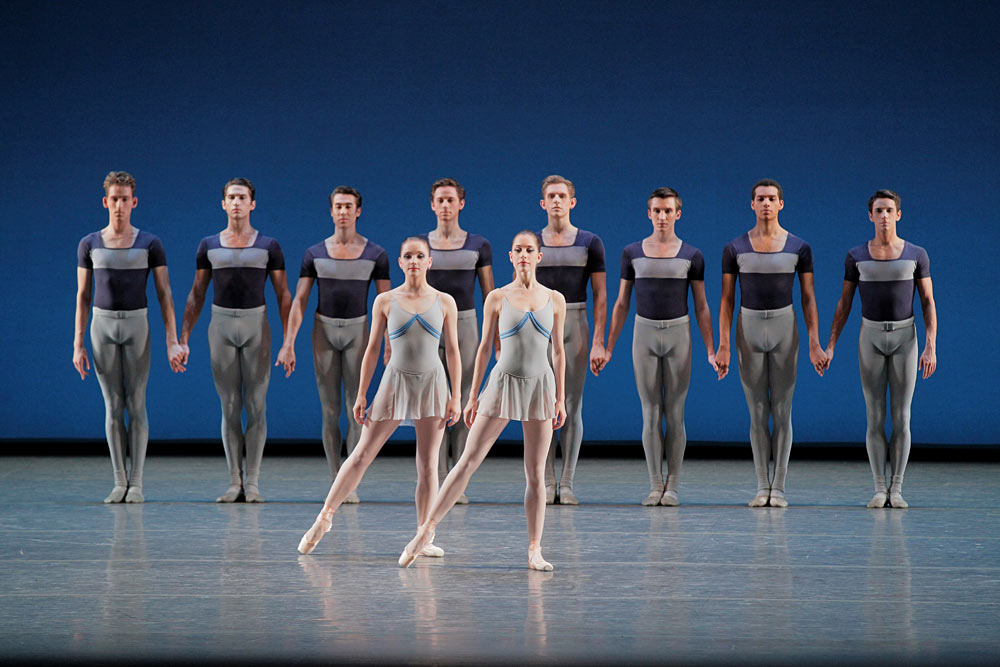
© Paul Kolnik. (Click image for larger version)
Who Cares?, set to symphonic orchestrations of Gershwin – bring on the triangle! – has never been a favorite of mine, particularly the anodyne, high-stepping, finger-pointing ensemble numbers. But with luxury casting – and on this night it was tippy-top – the ballet bubbles over irresistibly, becoming a showcase of all-American style and jazzy syncopation. (Though it still feels too long.) Tiler Peck and Robert Fairchild have refined the Man I Love pas de deux to a level of movie-star seduction and romance. Boy meets girl, girl slinks toward boy despite her better judgment, and the stars fall out of the sky. This has as much to do with the dancers’ innate feel for the arc of the duet as it does with rhythmic awareness and fearless partnering. This time around, though, the solo Fascinatin’ Rhythm was even more remarkable; the way Peck held certain poses, the contrast between fast and slow, the crispness and playfulness of her fouettés, made many in the audience laugh with delight.
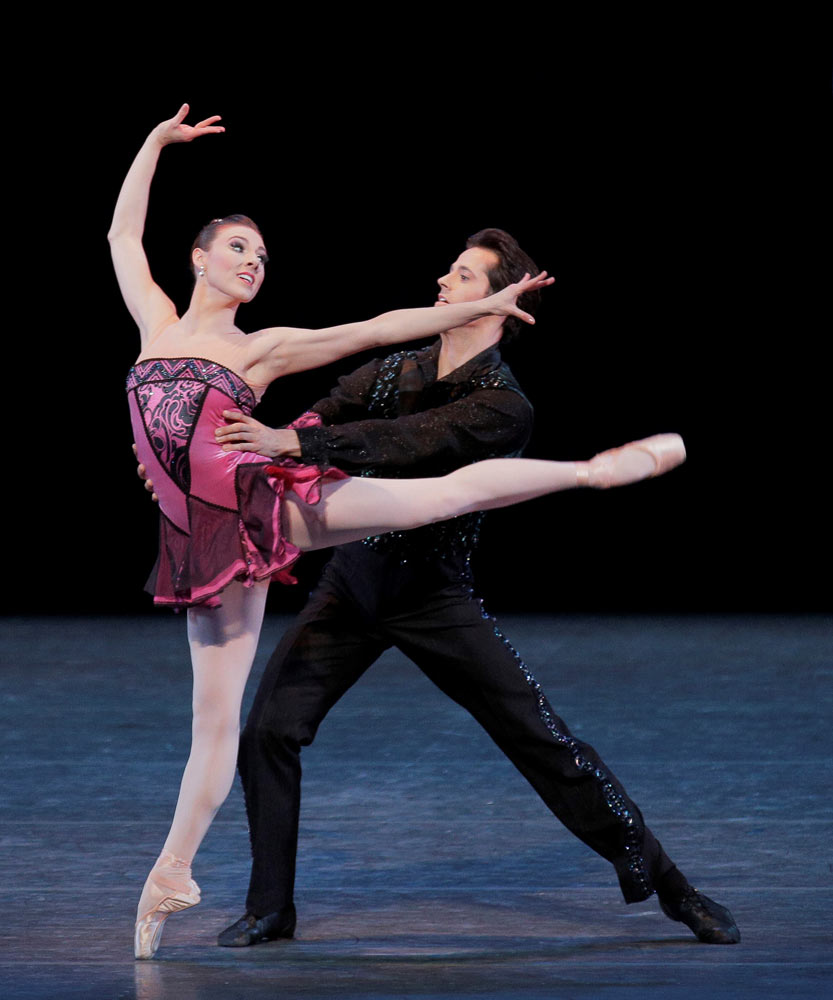
© Paul Kolnik. (Click image for larger version)
But she was not the only one. Teresa Reichlen’s easy-breezy solo, to I’ll Build a Stairway to Paradise, all beaten jumps and pas de chat and leaps around the stage, looked like a walk in the park, thrown off with relaxed charm. Ashley Bouder tore up the floor in Embraceable You. And in the demi-soloist roles – I like to think of them as the ladies in pink – Emily Kikta and Ashley Laracey stood out for their dynamism (Kikta) and subtle sensuality (Laracey). The men, too, deserve a nod. It was a damned good show.












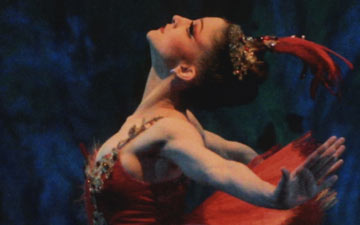
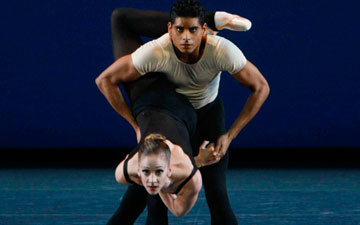
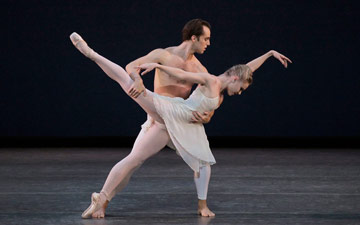


You must be logged in to post a comment.